Surfer Signals To Shadow Spotting... 10 Innovative Iron Play Tips And Drills From An Expert Golf Coach
Sometimes, to get the results you desire, you have to think outside the box. Well, PGA pro John Howells has done exactly that with these expert iron play tips


Walk down the driving range at any tour event and you will see different variations of the golf grip, postures, alignments and ball positions, all of which we are constantly told are the fundamentals of the golf swing.
Well, what if I told you they weren’t? For me, the number-one fundamental for the iron game is that your low point has to be after the ball. That’s a fact if you want to be a good, consistent iron player.
In this article, Golf Monthly Top 50 Coach John Howells offers a series of expert tips and useful advice on how to take your iron play to the next level...
Identify The Low Point
First you need to identify your low point. Set two alignment sticks up either side of the ball - these will serve as a reference point that will allow you to clearly see where your low point is.
Next, hit some balls. Ideally, you want to see the divot starting level with the ball and the two sticks, then going on to the target side.
Make A Centred Turn
Note, in the image below, how I’ve made a nice, centred backswing turn with my shoulders turning 90˚ and my hips about 45˚. Most importantly, I haven’t moved laterally.
When you move the hips and your head laterally, you’re going to encourage your low point to be behind the ball. Do that and your strike will be off.
Subscribe to the Golf Monthly newsletter to stay up to date with all the latest tour news, equipment news, reviews, head-to-heads and buyer’s guides from our team of experienced experts.
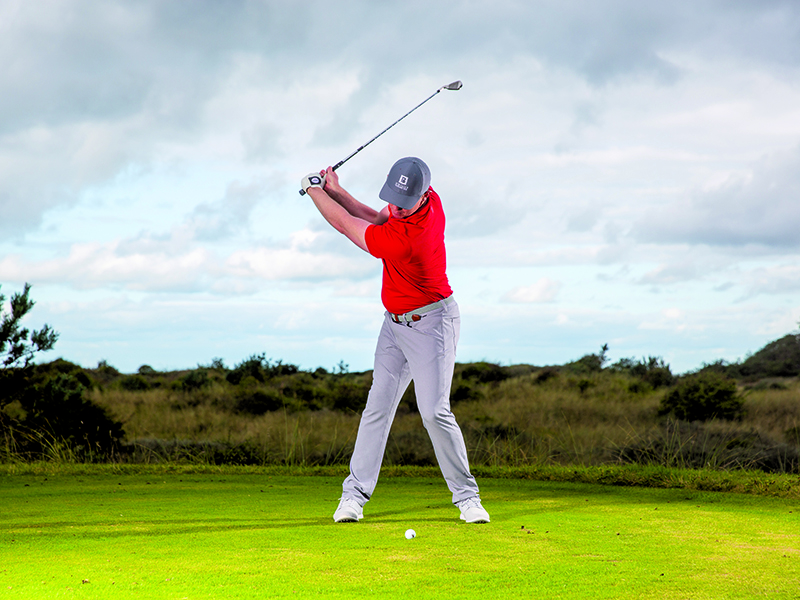
John Howells demonstrating a strong and centred turn in the backswing
This is something you can work on by giving yourself a little hug. Make a cross with your arms by putting them over your chest, then take your set-up position and try to make a backswing.
Focus on keeping your hips and head very centred as you make that backswing turn. In the final part of the drill, once you’ve made that centred backswing, stretch your arms away from your chest and see if you can form a grip.
Get Some Instant Feedback
If the suns out, why not try the shadow drill? It requires you to make that same cross with your arms over your chest as I outlined above. Place two balls either side of both your hip shadow and head shadow. Practise making a backswing turn and trying to keep your head and hips within those golf ball frames.
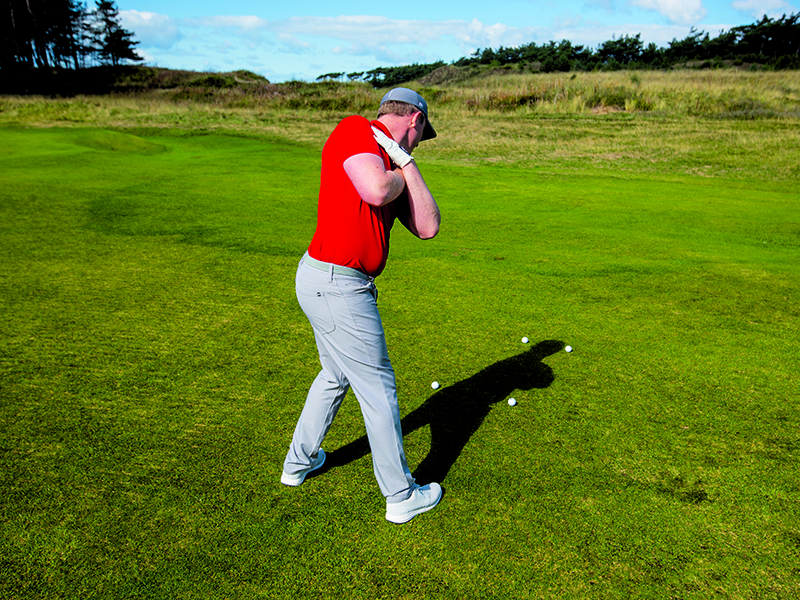
The shadow drill will give you instant feedback on your movement in the golf swing
You could also achieve this by using a physical object as a guide. The long, black device (in the image below) gives feedback on head sway; the alignment stick by my trail hip acts as a blocker for hip sway. The goal is to not touch either stick on your backswing.
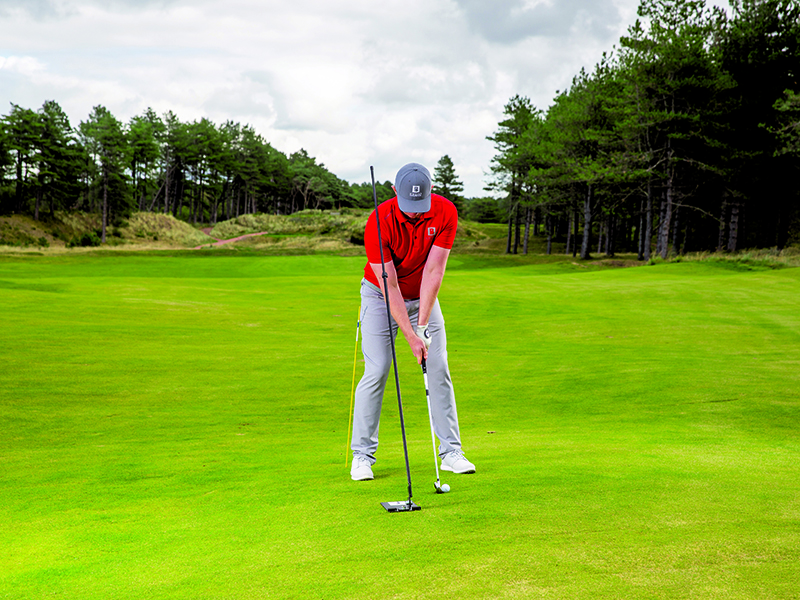
John Howells demonstrating a drill using two different training aids to monitor movement in the golf swing
Match Your Arm Swing To Your Body Turn
I often see players make huge backswings in which they take their arms back a long way but don’t really turn their body enough to match up with that. This generally leads to ‘throwing’ the club and scooping in the downswing, with the clubhead getting thrown past the hands. From here, you’ll get a lot of poor strikes.

John Howells doing a famous surfer hand signal which you can use to help with your iron play improvement
The idea of the ‘surfer drill’ (yes, that is me making a surfer dude sign with my thumb and pinky finger of my right hand below!) is to encourage you to make sure your arm swing in the backswing matches up with your body turn. Your thumb needs to touch your sternum, while the pinky should touch your lead arm.
You don’t want to feel as though that gap changes as you make your backswing, as you don’t want to pin your left arm across your chest. This drill is a good way of encouraging your arm swing to be quite short and your body turn quite big – a great recipe if you want to strike your irons well.
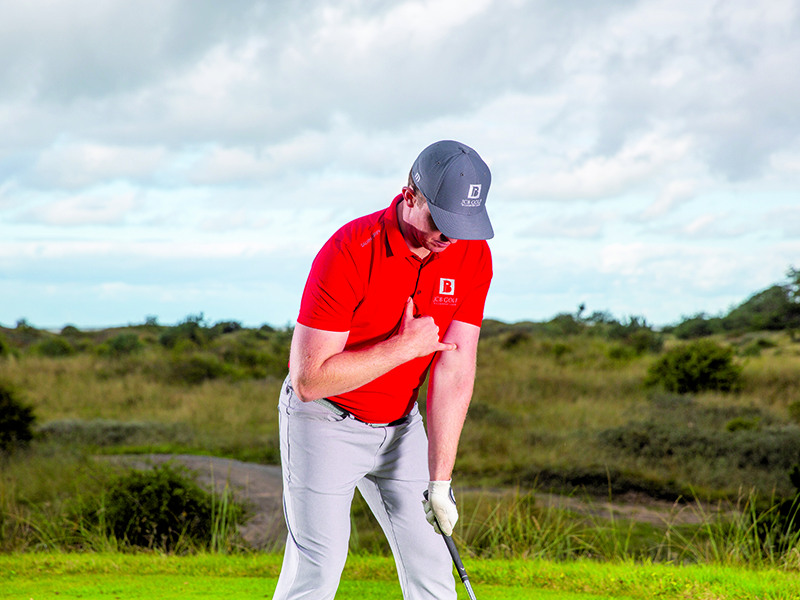
The surfer drill in practice, as demonstrated by John Howells
Piece It All Together
Now you’ve made a really good backswing, how are you going to translate that into a really good strike and then a really good follow-through? Once you have achieved this position, you can really attack the downswing with full knowledge and full confidence that my low point is going to be after the ball.
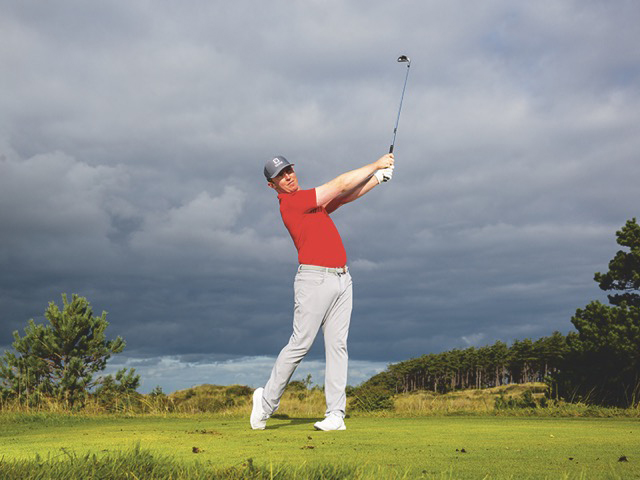
John Howells demonstrating the Tommy drill
The ‘Tommy drill’ can really help to round the swing off as it encourages the arms to be extended and long in the follow-through. Note how the clubhead and the shaft of the club are extended and long – very much how Tommy Fleetwood hits a lot of his golf shots.
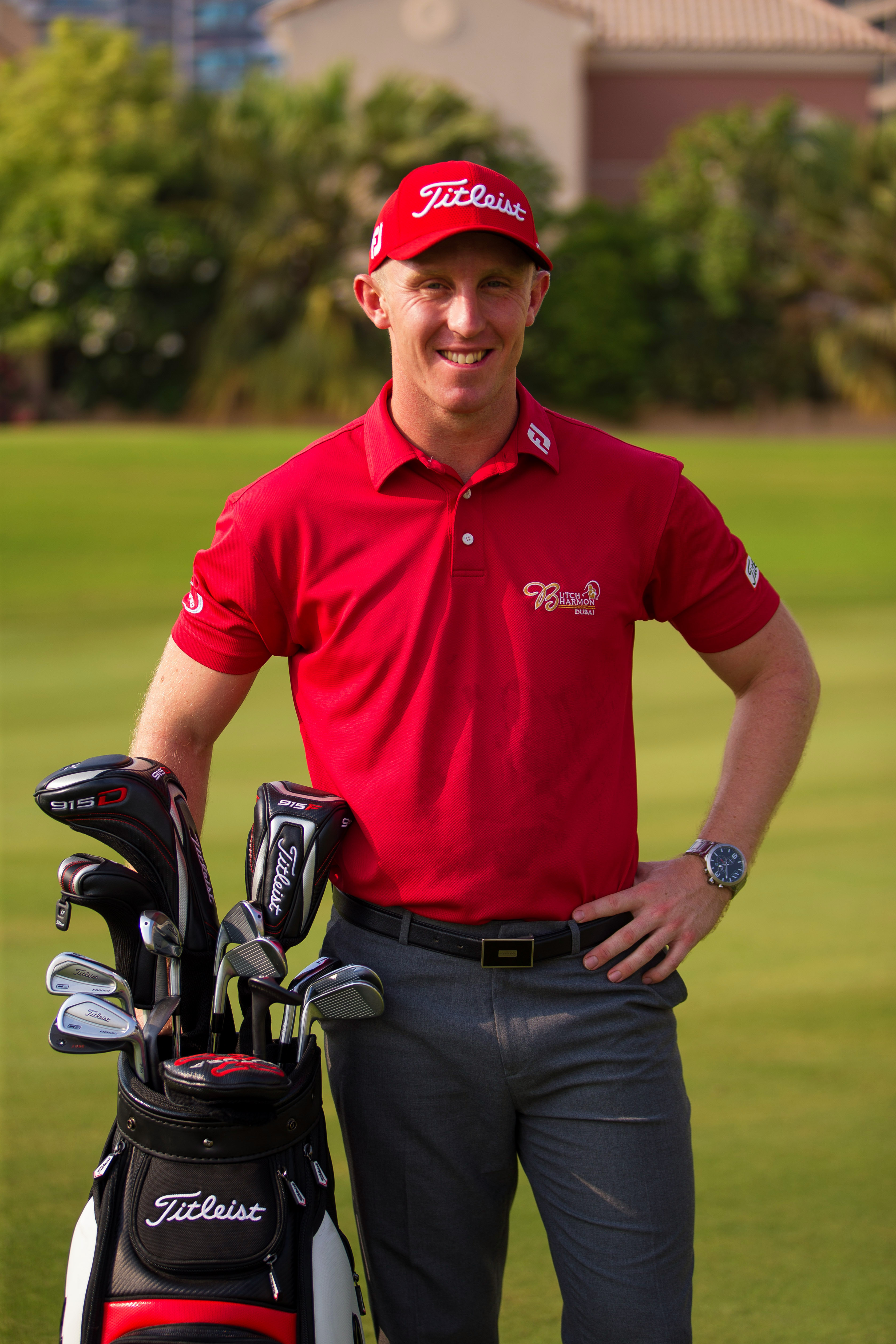
Location: JCB Golf & Country Club
John joined the JCB Golf & Country club after spending seven years as the Senior Instructor at the Butch Harmon School of Golf Dubai. His coaching style is very much holistic in nature and TPI physical screenings are an integral part. John is able to identify physical limitations that may affect your swing and he has worked with the likes of Darren Clarke, Michael Hoey, Steve Webster and Rayhan Thomas.
Biggest influence:
Without a doubt the six years I spent working for Butch Harmon. I worked there from 2012 to 2018 and had the ability to everyday learn from one of the best modern instructors in the world today, Justin Parsons, who was my mentor and boss. We also were very fortunate to meet and learn from Claude Harmon III and Butch. The time spent in Dubai was the most pivotal because being surrounded by excellence was so inspirational for me as an instructor. I was able to frequently watch tour players practicing on site and working with their personal coaches, I was able to shadow coaches such as Sean Foley working with Danny Willet, Alan Thompson working with Tommy Fleetwood.
Greatest teaching success story: Working with Rayhan Thomas for three years as his putting coach was a pretty special opportunity for me. Seeing him go on to win his first professional tournament at the 2016 Mens Tour Dubai Creek open where he set a world record equalling nine birdies in a row.
Biggest challenge:
There is a new wave of golfers coming through the Bryson DeChambeau era and I am cautious about how many young golfers will attempt to play the game the same way as he does over the coming 10 years. We could see a lot of young talented golfers fall by the wayside either through injury or not being able to move the same way that Bryson does. I am really supportive of golfers pushing the boundaries of human physical performance so I admire what Bryson has been able to do, however I am apprehensive as to what this might be doing to the way young golfers see the game as a weightlifter/crossed with golfer/crossed with long drive champion.